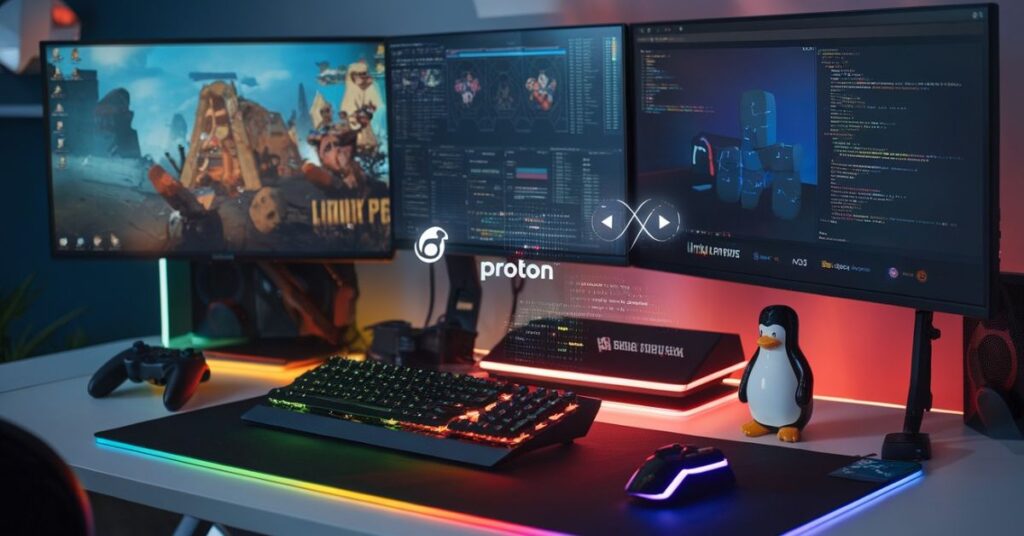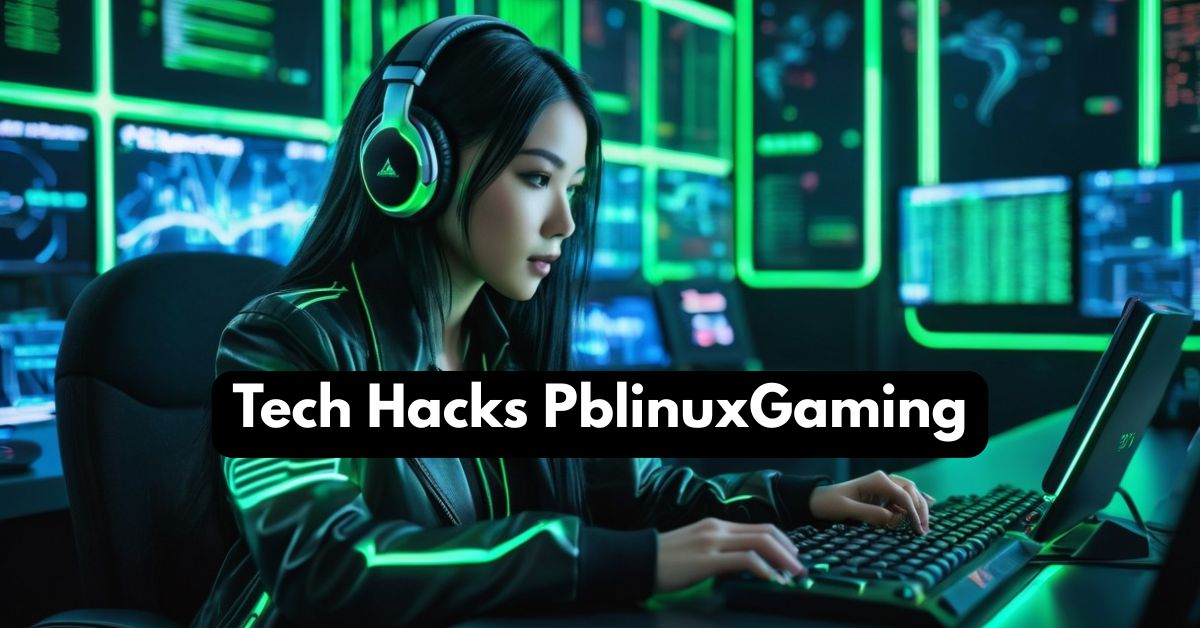Gaming on Linux is no longer just for the curious or the brave it’s become a powerful alternative to Windows. Thanks to modern tools, optimized kernels, and community-driven distributions like PB Linux Gaming (pblinuxgaming), players can now experience buttery-smooth frame rates, seamless game compatibility, and stable long sessions.
With the right tech hacks, you can push your pblinuxgaming setup even further and unlock its full gaming potential all on open-source systems.
But here’s the catch: to get the most out of Linux gaming performance, you need to tweak, adjust, and sometimes outsmart your system. That’s exactly what this guide is here for. It’s not theory, it’s not fluff. It’s a toolbox packed with real tech hacks for PB Linux Gaming that will unlock true potential.
Let’s break it all down—simple, clear, and effective.
Fine-Tune Your PB Linux System for Gaming Performance
Start With the Right Desktop Environment
Your desktop environment (DE) plays a huge role in gaming performance. The heavier it is, the more system resources it eats up. GNOME and KDE look beautiful, but they hog memory and CPU cycles that your games desperately need.
Best lightweight desktop environments for gaming:
- XFCE – Fast, minimal, and easy on resources
- LXQt – Sleek and even lighter than XFCE
- MATE – A bit heavier but still gaming-friendly
Why this matters? Because the less RAM and CPU your desktop uses, the more you have available for your game. This is especially important on mid-range or older hardware.
Trim Down Background Services
When you boot your system, tons of services start running silently in the background—Bluetooth managers, indexing tools, cloud sync apps. If you’re not using them while gaming, they’re just stealing performance.
Performance boost tip:
Before you start gaming, close all unnecessary background apps like Dropbox, OneDrive (if installed), media players, or torrent clients.
Less clutter = smoother frames.
Set Your System to Performance Mode
By default, many Linux systems are set to “balanced” mode to save energy. This works for laptops on battery, but it’s not what you want when gaming.
Performance mode does three things:
- Pushes your CPU to run at maximum frequency
- Reduces system latency
- Delivers more consistent frame rates, especially in CPU-bound games
On PB Linux Gaming, switching to performance mode is easy using system settings or built-in performance toggles. Once done, your games will feel snappier and more responsive.
Optimize Virtual Memory
Linux uses something called “swappiness” to determine how aggressively it uses your hard disk for memory overflow. While this helps multitasking, it’s bad for real-time performance like gaming.
Tweaking virtual memory can:
- Prevent lag during high RAM usage
- Stop stutters caused by background memory writes
- Make loading screens shorter and smoother
It’s a small change that creates a big difference.
Install and Configure Essential Gaming Components
Use the Right GPU Drivers
Your graphics card is your gaming engine. But without the right drivers, it won’t run smoothly. PB Linux Gaming already comes with most drivers, but keeping them updated is crucial.
For NVIDIA users:
- Use the proprietary drivers for best performance
- Avoid the open-source “nouveau” drivers—they lack advanced features
For AMD users:
- The open-source Mesa drivers are excellent and updated frequently
- Ensure you have the latest Vulkan support for modern games
Use GameMode to Boost Focused Performance
GameMode is a tool designed specifically for Linux gamers. It temporarily boosts CPU performance, improves I/O handling, and ensures your system doesn’t downclock mid-game.
Benefits of GameMode:
- Reduced stuttering
- Higher and more stable FPS
- Better responsiveness under load
Once GameMode is active, your system dedicates everything to running your game smoothly—no distractions.
Use Tools Like VKBasalt and Proton Tweaks

VKBasalt is a hidden gem in the Linux gaming world. It adds post-processing effects like sharpening, anti-aliasing, and more, directly into your Vulkan-supported games.
Why it matters?
- Makes older games look cleaner and more modern
- Sharpens graphics without affecting frame rate too much
Paired with Proton tweaks—like enabling FSync or Esync—you’re not just playing games, you’re optimizing them down to the engine level.
Boost FPS and Reduce Input Lag With Practical System Tweaks
Use a Gaming-Optimized Linux Kernel
PB Linux Gaming supports installing custom kernels like Liquorix, XanMod, or Zen, all designed for gamers and content creators.
What makes them special?
- Lower latency
- Better scheduling for real-time applications
- Improved mouse and keyboard input response
Games feel more “connected” with these kernels—no delays, no microstutters.
Manage Frame Delivery and Screen Tearing
If your screen tears or feels jumpy, it’s not just annoying—it can break immersion.
Here’s how to fix it:
- Enable VSync (vertical sync) in your game settings
- Disable desktop compositors when gaming
- Make sure your monitor refresh rate matches the game’s frame output
Smooth, tear-free gaming is possible on Linux—and these steps get you there.
Fix Common Gaming Problems on PB Linux
Dealing With Compatibility Issues
Linux doesn’t run Windows games natively. That’s where Proton for Linux and Wine gaming Linux step in. They act as translators, but sometimes even they need help.
Use cases:
- A game doesn’t launch? Use a different Proton version.
- Missing fonts or .dll errors? Use a tool like Protontricks to install what’s needed.
- Crashing mid-game? Check ProtonDB for community fixes.
Linux gaming is about problem-solving—and the good news is, the solutions are usually one Google search away.
Solving Audio Glitches and Latency
Sound crackling, audio delays, or missing music? Welcome to PulseAudio issues on Linux.
Fix it by:
- Switching to PipeWire, a newer and more stable audio system
- Making sure only one app uses the sound card at a time
- Lowering buffer sizes in your audio settings
A smooth game deserves smooth audio. Don’t overlook this simple but essential area.
Controller Not Working?
Controllers can be tricky on Linux, especially outside of Steam. Use tools built into Lutris game manager or community-created configurations to map buttons and axes correctly.
You can also find controller profiles for most games shared by other Linux users on gaming forums and Discord channels.
Tap Into PB Linux Gaming Community Tools
Official PB Linux Gaming Tools
PB Linux Gaming isn’t just a distribution—it’s a platform. The community offers:
- Performance presets
- Driver bundles
- Proton tweaks for specific games
- Forums and Discord channels with real-time help
The more you explore, the more powerful your gaming setup becomes.
Use Pre-Built Game Scripts
Many users in the PB Linux Gaming community share their optimized settings for popular titles like:
- GTA V
- Elden Ring
- OSRS (Old School RuneScape)
- Red Dead Redemption 2
You can often install these with one click via Lutris or copy-paste them into your Proton launch options.
Keep Your System Clean and Ready
Regular Updates
Linux thrives on updates. They bring not just security, but actual performance gains—especially for gaming libraries like Vulkan, Wine, and Mesa.
Make a habit of updating once a week.
Clean Junk and Free Up Disk Space
Games are big. Over time, cache files, logs, and temp folders eat up space. Use tools like BleachBit or even your file manager to clean:
- Old game downloads
- Unused installers
- Outdated kernel files
- Logs from crash reports
Clean system = fast system.
Turn Off What You Don’t Use
Background apps like syncing tools, note managers, or indexers can spike CPU usage mid-game. Before launching your favorite game, close these apps. This alone can give you up to 10–15% more performance in some titles.
Advanced Hacks for Hardcore Linux Gamers
Try a Dedicated Gaming Distribution
While PB Linux Gaming is strong, there are other distros like Garuda Gaming or Nobara Project that offer even more pre-built gaming tools.
Many power users dual boot or run a gaming OS on a separate drive for pure, distraction-free performance.
Compile Gaming Tools From Source
If you’re adventurous, you can build custom versions of:
- Wine GE
- DXVK (DirectX to Vulkan)
- VKD3D for DirectX 12 translation
This gives you bleeding-edge performance and bug fixes before they’re officially released.
Use VFIO/GPU Passthrough (Expert Level)
Some Linux gamers go all out—running Windows inside a virtual machine but giving it direct access to a real GPU. This offers 99% native performance while keeping Linux as the host OS.
It’s tricky and not for everyone, but it shows how far Linux gaming has come.
Conclusion About tech hacks pblinuxgaming
PB Linux Gaming isn’t just about installing a game it’s about creating an environment where performance thrives. With these tech hacks, from tweaking your kernel to managing system resources smartly, you’re in full control.
Whether you’re chasing higher FPS, solving crashes, or fine-tuning visuals, the tools and tricks are right here—built for you, the modern Linux gamer.

DuolingoExperts, managed by MarkJohan, offers expert insights and tips for mastering languages. A tech-driven platform to enhance your learning experience.

